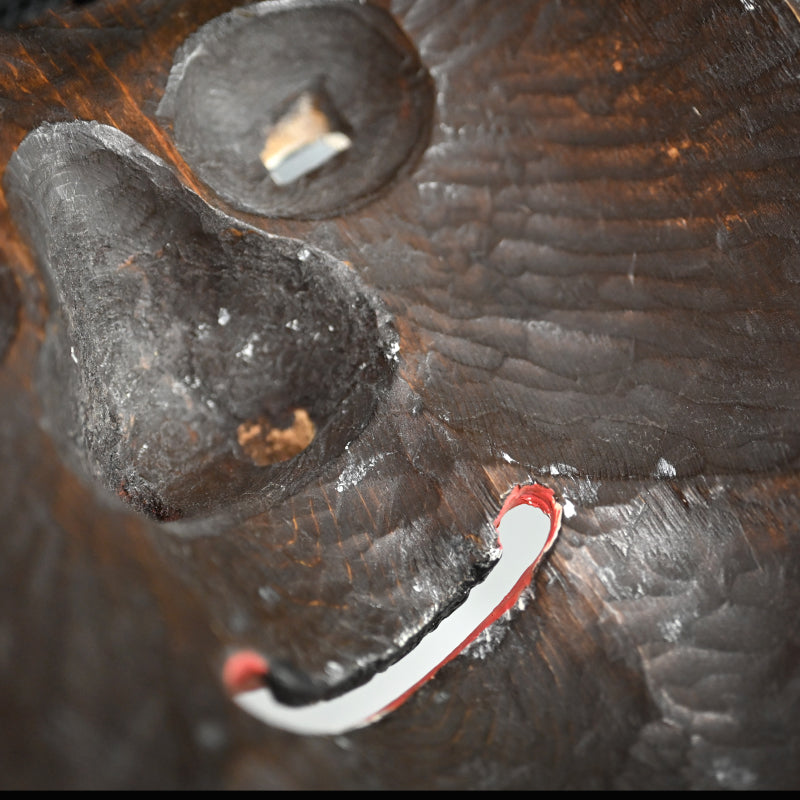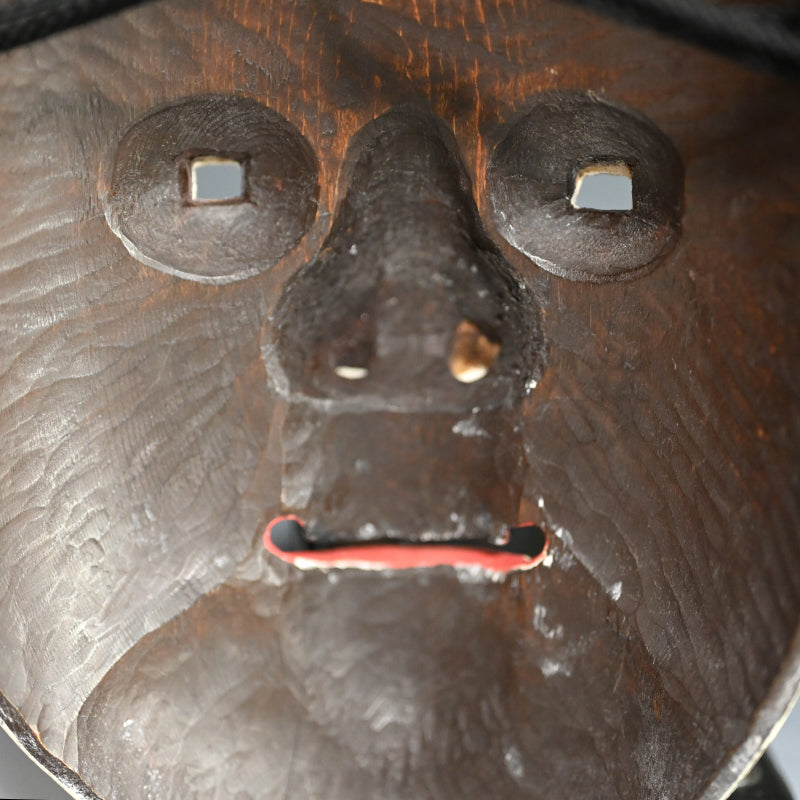Japanese Noh Mask named “JIDOU”
Japanese Noh Mask named “JIDOU”
Item Code: NOH33
Couldn't load pickup availability
A Noh mask representing a sprite who possesses the elixir of long life. Carved wood covered with Gofun and mineral pigments, 20th century. It is 20 x 14 cm and in overall fine condition. The mouth and eyes curl into a smile accentuated by dimples in the full cheeks. Wispy eyebrows swerve up at the outer corners and strands of hair fall down over the forehead.
Noh theater, often referred to as Nohgaku, is a traditional Japanese performing art with a rich history dating back centuries. It is a highly stylized form of theater that combines elements of dance, music, poetry, and drama. Central to Noh performances are the intricate masks worn by the performers, known as Noh men. The origins of Noh can be traced back to ancient Japanese performing arts, particularly Kagura (ritual dance and music) and Bugaku (court dance and music). These traditional forms incorporated dance and music in religious rituals and imperial court ceremonies.
Sarugaku, a precursor to Noh, emerged during the Nara (710-794) and Heian periods (794-1185). Sarugaku performances included comedic elements, acrobatics, and dance. Over time, it began to incorporate more serious and refined themes.
Noh as we know it today began to take shape during the Muromachi period (1336-1573). Kan'ami Kiyotsugu and his son Zeami Motokiyo played significant roles in refining and formalizing Noh performances, codifying its structure, music, and movements.
Zeami emphasized the importance of yūgen (mysterious beauty) and monomane (imitation or mimicry) in Noh, which influenced the development of Noh's distinctive aesthetic and storytelling techniques. Noh combines classical Japanese poetry (waka) with music and dance. The plays often revolve around themes of the supernatural, historical events, or literary works. During the Momoyama period the Tempo of Noh, which had been adopted by the elite, slowed significantly, to differentiate itself aesthetically from other forms of ritual dance. This is the Noh that we have today. Noh masks represent different character types, such as gods, demons, spirits, elderly characters, and more. Each mask has distinct features and expressions that help convey the character's personality and emotions. They are meticulously crafted from wood and are meant to conceal the actor's emotions, allowing them to embody various characters and personas throughout the performance.
Noh theater is designated as a UNESCO Intangible Cultural Heritage and continues to be an essential part of Japan's cultural heritage. It has had a significant influence on other art forms, including traditional Japanese arts like Kabuki and Bunraku, as well as contemporary theater and dance. It remains a cherished and deeply respected art form in Japan, captivating audiences with its elegance, symbolism, and timeless stories.
Share






























